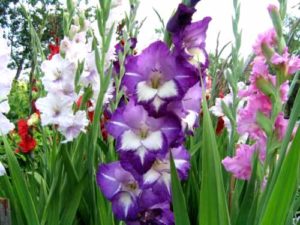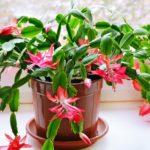How to care for gladiolus?
 Gladiolus plants are quite undemanding, so their cultivation will not cause you any particular difficulties, and the plant itself will delight you with the beauty of its unique inflorescences, for which the unusual spiral shape of gladioli became so popular.
Gladiolus plants are quite undemanding, so their cultivation will not cause you any particular difficulties, and the plant itself will delight you with the beauty of its unique inflorescences, for which the unusual spiral shape of gladioli became so popular.
In addition, gladioli have a wide range of colors, some types of gladioli have a rather aggressive dark scarlet and even black color of flowers, while others, on the contrary, will delight you with smooth transitions of gently purple or pink shades.
Proper care of these plants is in the preliminary preparation of the soil, weeding, planting characteristics and daily care in the process of growth. You will learn about when to plant gladioli and other aspects of their breeding in this article.
Before you start planting gladiolus bulbs, you need to pre-clean them from the formed husk and dry them well, arrange them for a few days in a well-lit and warm place. After some time, during which the shoots of the bulbs begin to grow, you can plant gladioli, which should be planted in a well-heated, loose soil, since the roots of these plants need air circulation. In central Russia, gladioli are planted mostly in late spring, when the soil temperature has already reached 10 degrees. It is recommended to have the corms in the soil at a distance of 15-20 cm from the ground, and the smaller the bulb, the closer it should be to the surface of the soil, so children of gladioli should be planted no deeper than 3-5 cm.
Quite naturally, the care of these plants does not end there, planted gladioli, the cultivation of which can only be said to have begun, need abundant watering, subsequent loosening of the soil and, of course, top dressing. Gladioli prefer a well-lit place and abundant watering, which is recommended to be made several times a week, depending on weather conditions. Feeding gladiolus directly depends on the quality of the soil on which they grow, and weather conditions. For the entire period of growth and flowering of gladioli, top dressing is performed about 5 times: after the appearance of the first leaf, during the formation of the flowers, after the appearance of the inflorescences, at the beginning of the flowering stage and after its completion. Mineral and organic fertilizers have the most beneficial effect on gladioli.
Another very important event of growing gladioli is their cleaning. Approximately 4 weeks before the end of flowering, the gladiolus bulbs must be removed from the soil for storage. Gladiolus digging should be carefully, trying not to damage the bulbs, which then need to be separated from the stem, rinse and dry. Only after all these activities, gladiolus bulbs can be stored in a damp room with a temperature of about 6 degrees, the lower shelf of the refrigerator is best suited. So in spring your gladioli will be ready to decorate your garden plot with lush bloom again.



























